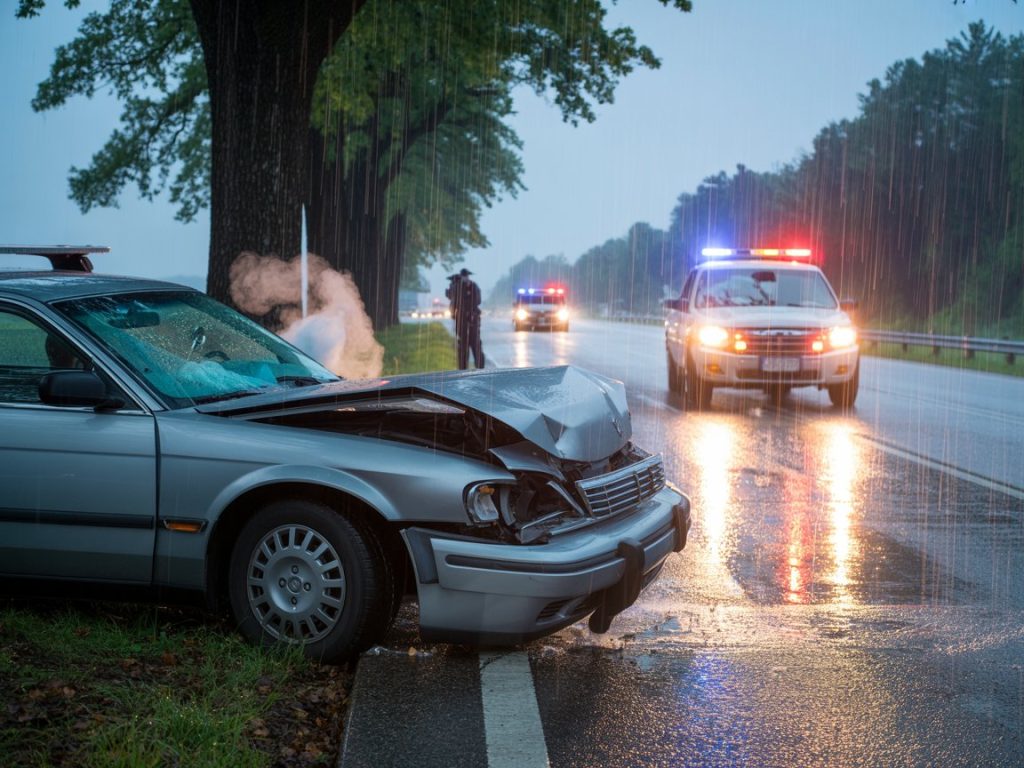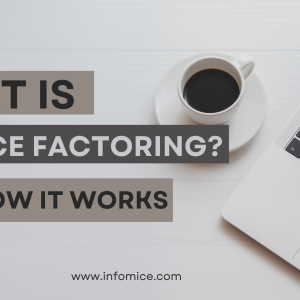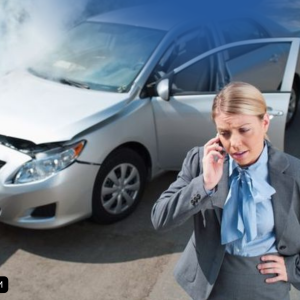
Introduction
Driving across the wide-open roads of America is practically a rite of passage. Whether you’re commuting to work, heading out for a road trip, or simply running errands, your car is a key part of your life. But there’s one essential thing you need before turning the key in the ignition driving insurance.
What is driving insurance?
Driving insurance, often called car insurance or auto insurance, is a contract between you and an insurance company that provides financial protection in case of an accident or theft. It helps cover the costs of injuries, property damage, and sometimes even legal fees, depending on the type of coverage you have. In simpler terms, it’s your financial safety net on the road.
Car insurance policies typically include different types of coverage, such as:
- Liability coverage, which pays for damages and injuries you cause to others.
- Collision coverage, which helps pay to repair or replace your car if you’re in an accident.
- Comprehensive coverage, which covers non-collision events like theft, vandalism, or natural disasters.
- Personal Injury Protection (PIP) and uninsured motorist coverage, depending on your state’s laws.
Think of it as a backup plan that kicks in when life throws you a curveball while you’re behind the wheel.
Legal Requirements for Driving Insurance in the U.S.
Insurance is Mandatory in 49 States
Let’s get this straight if you’re driving in the United States, odds are you’re legally required to have car insurance. In fact, 49 out of 50 states make it mandatory for drivers to carry at least liability insurance. This type of coverage helps pay for any damage or injury you might cause to others while driving. Whether you’re in California, Texas, or Illinois, skipping out on insurance isn’t just risky it’s illegal.
Each state sets its own minimum coverage limits, which means the exact dollar amounts you’re required to carry can vary. But the bottom line is this: unless you’re in New Hampshire (more on that next), driving without insurance is a no-go.
New Hampshire’s Unique Requirement
Here’s the curveball: New Hampshire doesn’t technically require drivers to carry car insurance. Sounds like a free pass, right? Not exactly.
While drivers in New Hampshire aren’t obligated to buy insurance, they must prove financial responsibility if they cause an accident. That means you’ll need to show that you can cover the cost of injuries or property damage out of pocket. If you can’t, your license and vehicle registration could be suspended. So, it’s just insurance in disguise with a lot more financial risk.
Virginia’s Shift from Fee to Mandatory Insurance
Virginia used to be a bit of a wildcard too. Drivers had the option to pay a $500 “uninsured motorist fee” to the state and legally drive without insurance. It didn’t cover you in an accident it simply let you drive uninsured.
But as of recent legislative changes, Virginia has now joined the rest of the country by requiring drivers to carry minimum liability insurance. This shift helps protect not only the driver but also other people on the road. In short: the loophole is gone, and insurance is now a must in Virginia.
State-by-State Breakdown
States with Strict Minimum Requirements
Some states go above and beyond when it comes to setting insurance minimums. For instance, Texas requires 30/60/25 that’s $30,000 in bodily injury coverage per person, $60,000 per accident, and $25,000 for property damage. California, on the other hand, sets lower limits at 15/30/5.
These minimums are designed to ensure that if you cause an accident, there’s enough coverage to handle basic medical expenses and property damage. However, in serious crashes, even the highest state minimums may fall short so drivers often opt for higher coverage.
No-Fault States and What That Means
In no-fault states, your own insurance pays for your medical expenses regardless of who caused the accident. States like Florida, Michigan, New Jersey, and New York follow this model. This means that drivers in these states are usually required to carry Personal Injury Protection (PIP), which covers things like medical bills and lost wages.
The goal is to reduce lawsuits and streamline claims, but no-fault insurance systems tend to lead to higher premium costs.
Flexibility in Coverage – What’s Optional, What’s Not
Beyond liability and PIP in required states, other coverage options are usually optional, including:
- Collision insurance: Covers damage to your own vehicle.
- Comprehensive insurance: Covers non-collision incidents like theft or weather damage.
- Uninsured/underinsured motorist coverage: Protects you if the at-fault driver doesn’t have enough coverage.
Optional doesn’t mean unnecessary, though. Depending on your financial situation and vehicle value, these can be smart add-ons.
Key Types of Driving Insurance Coverage
Liability Insurance
Liability insurance is the cornerstone of most car insurance policies and the one that nearly every state demands. It includes two parts:
Bodily Injury Liability
This covers medical expenses, legal fees, and lost income for people injured in an accident that you caused. If someone sues you for injuries, this is the coverage that kicks in.
Property Damage Liability
This takes care of the cost of repairing or replacing someone else’s property that you damage in an accident. That includes other vehicles, fences, buildings, and more.
Personal Injury Protection (PIP)
Required in no-fault states, PIP covers your own medical expenses, regardless of who’s at fault. It may also cover things like lost wages, funeral costs, or even childcare expenses while you recover.
Uninsured/Underinsured Motorist Coverage
This protects you when the other driver doesn’t have enough insurance or none at all. It can help with medical bills, lost wages, and even pain and suffering. In some states, this coverage is mandatory, while in others it’s optional but highly recommended.
Why Is Driving Insurance Required?
Financial Protection for All Parties
Imagine getting into an accident and being on the hook for thousands of dollars in damages or hospital bills. Insurance is there to shield you from financial disaster. It also ensures the person you hit gets the help they need, even if you can’t afford to pay out of pocket.
Legal Protection
Being insured keeps you compliant with state laws, avoiding hefty fines, license suspensions, and court visits. It also helps you defend yourself legally if you’re taken to court after an accident.
Public Policy and Road Safety
On a broader level, mandatory insurance laws help maintain public safety and accountability. They ensure that everyone on the road is financially responsible and that accident victims aren’t left with crippling medical or repair bills.
What Happens If You Drive Without Insurance?
Legal Consequences (Fines, Suspension, etc.)
Driving without insurance is a legal offense in most states. If you’re caught, you could face:
- Fines ranging from $100 to several thousand dollars
- Suspension of your driver’s license and registration
- Court appearances and additional administrative fees
In some states, you might even face jail time for repeat offenses.
Financial Risks (Out-of-pocket expenses)
Without insurance, you’ll have to pay for everything yourself if you cause an accident. That means medical bills, vehicle repairs, and even legal fees. If you injure someone or destroy their property, you could be paying off the debt for years.
Civil and Criminal Liabilities
In serious cases, like a crash that results in major injuries or death, driving uninsured can lead to civil lawsuits or even criminal charges. The financial consequences can be devastating, and the legal repercussions could follow you for life.
Why it matters for every driver in the U.S.
In nearly every U.S. state, car insurance isn’t just a good idea it’s the law. And it’s not just about checking a box to stay legal. Having driving insurance:
- Protects you financially: A single accident can cost thousands of dollars in medical bills, car repairs, or lawsuits.
- Covers others involved: If you’re at fault, your insurance helps take care of the other party’s expenses.
- Keeps you on the road: Without insurance, getting caught could lead to license suspension, fines, and even jail time.
- Provides peace of mind: Knowing you’re covered helps you drive with more confidence and less stress.
Driving without insurance is a gamble one that could cost you way more than monthly premiums. So, if you’re wondering whether you need driving insurance in America, the answer is a resounding yes, and for good reason.
Minimum Coverage vs. Full Coverage
What Does “Minimum” Cover?
Minimum coverage is exactly what it sounds like—the bare minimum amount of insurance you’re legally required to have to drive in your state. Typically, this includes liability insurance that pays for injuries and damages you cause to others, but not your own vehicle.
Let’s break it down:
- Bodily injury liability pays for medical expenses of the other party.
- Property damage liability covers repair costs for damaged property.
But don’t get it twisted minimum coverage won’t help you fix your own car after a crash, nor will it help if your car is stolen or damaged by hail, fire, or a falling tree. It’s legal, but it leaves you pretty exposed.
Is Full Coverage Worth It?
Full coverage goes beyond the legal minimum. It typically includes:
- Collision insurance – covers damage to your vehicle from an accident, regardless of fault.
- Comprehensive insurance – covers non-collision-related damage like theft, vandalism, weather events, etc.
Is it worth it? That depends.
If you’re driving a newer or financed car, full coverage is often required by lenders—and it’s a smart move to protect your investment. But if your car is older and paid off, the cost of full coverage might outweigh the benefit. It’s like insuring a $1,000 car with a $600/year policy. Doesn’t make much sense, right?
Factors That Determine What You Need
When choosing between minimum and full coverage, ask yourself:
- How much is your car worth?
- Can you afford to repair or replace it out-of-pocket?
- Are you financing or leasing?
- Do you live in a high-risk area (crime, weather, traffic)?
Your answers can guide you toward the right level of coverage.
How Driving Insurance Costs Are Determined
State Legislation
Where you live plays a huge role in how much you’ll pay for insurance. Each state sets its own minimum coverage laws, and some require extras like PIP or uninsured motorist coverage, which can bump up the price.
Driving Record and Personal History
Your driving history is like a credit score for insurance. Speeding tickets, accidents, DUIs? All red flags that raise your rates. Meanwhile, a clean record can earn you discounts and lower premiums.
Vehicle Type and Usage
Insurers look at what you drive and how you drive it. A luxury sports car will cost way more to insure than a modest sedan. Also, if you use your car for work or long commutes, you’ll likely pay more than someone who only drives on weekends.
Location-Based Pricing
Even within a single state, your zip code can impact your rate. Urban areas usually have higher rates due to traffic density and crime, while rural areas often enjoy lower premiums. That’s why someone in Los Angeles may pay double what someone in a small Iowa town pays for the same policy.
How to Get the Best Car Insurance Deal
Compare Quotes from Multiple Providers
Don’t just accept the first quote you get. Shop around and compare policies online or through an agent. Companies weigh risk differently, so the same driver could see a $500 difference between providers.
Bundle Policies for Discounts
Got homeowners or renters insurance? Bundle it with your auto policy and save up to 20% or more. It’s one of the easiest ways to get a better deal without changing coverage.
Maintain a Clean Driving Record
The longer you go without accidents or violations, the more you’ll save. Many insurers offer safe driver discounts and even rewards programs that lower your premiums over time.
Tips for First-Time Drivers or Immigrants
Understanding U.S. Insurance Norms
In the U.S., driving without insurance is a legal offense in almost every state. If you’re a first-time driver or new to the country, it’s essential to understand the local rules. Many policies also require a valid U.S. driver’s license, so make sure you’ve got that handled first.
What Documents You Need
To apply for insurance, you’ll typically need:
- A valid driver’s license
- Vehicle registration
- Vehicle identification number (VIN)
- Proof of address
Some insurers may also ask for your driving history, so if you’ve driven in another country, bring whatever proof you can.
Recommended Providers for New Drivers
For newcomers or first-time drivers, some insurance companies are more forgiving. GEICO, State Farm, and Progressive offer flexible policies for people with no U.S. driving history. Always check for international driver programs if you haven’t yet received a U.S. license.
Insurance Myths You Should Stop Believing
“I Don’t Need Insurance in Some States”
False. Every state (except New Hampshire) requires insurance—or at least financial responsibility. And even in New Hampshire, if you cause an accident without coverage, you’re on the hook for everything.
“My Car is Old, I Don’t Need Coverage”
An old car might not need full coverage, but you still need liability insurance. Also, if replacing or fixing your car would be financially difficult, it might still be worth having collision coverage.
“Full Coverage Means Everything”
Not true. Full coverage usually includes collision and comprehensive, but it doesn’t cover:
- Regular maintenance
- Rental car reimbursement (unless added)
- Roadside assistance (unless added)
Always read your policy carefully.
How to Prove Financial Responsibility
Alternatives to Traditional Insurance
In a few states, you can show financial responsibility without buying standard insurance. This usually applies to people who have substantial assets or minimal driving needs.
Surety Bonds, Cash Deposits & Self-Insurance
Some states accept:
- Surety bonds: You pay a bond company to cover you in the event of a claim.
- Cash deposits: You deposit a set amount (often $25,000–$50,000) with the DMV.
- Self-insurance: Usually reserved for companies or very wealthy individuals with fleets of vehicles.
While legal, these options are risky for average drivers and not widely recommended.
Driving Without Insurance: Real-Life Case Examples
Accidents Without Insurance – Who Pays?
Let’s say you crash into another car and you’re uninsured. You’re now personally responsible for medical costs, repair bills, legal fees, and more. Even worse, if you’re sued, your assets (like savings or property) could be seized.
How Lawsuit Damages Can Ruin Finances
There are countless real-life stories of uninsured drivers being ordered to pay tens of thousands of dollars. Without insurance, you might be stuck making payments for decades—sometimes even having wages garnished by court order.
The Future of Driving Insurance
Impact of Self-Driving Cars
As self-driving technology becomes more mainstream, the auto insurance industry is facing big changes. If the car is doing the driving, who’s liable in a crash—the driver or the manufacturer? Expect new laws and policy models in the years ahead.
Usage-Based Insurance Models
Modern insurers now offer usage-based plans using telematics—a fancy term for tracking how and when you drive. Safer habits = lower rates. These are popular with younger drivers looking to save money.
Legislation Trends by State
More states are tightening insurance laws, especially around minimum limits and required coverage. Expect ongoing changes, particularly in how policies are structured around autonomous vehicles and climate-related risks.
Conclusion
So, do you need driving insurance in America? Absolutely. Not only is it required by law in nearly every state, but it also protects you, your passengers, and everyone else on the road. Whether you choose minimum or full coverage, make sure your policy fits your lifestyle, budget, and driving habits.
Remember, it’s not just about following the rules—it’s about protecting your future.


